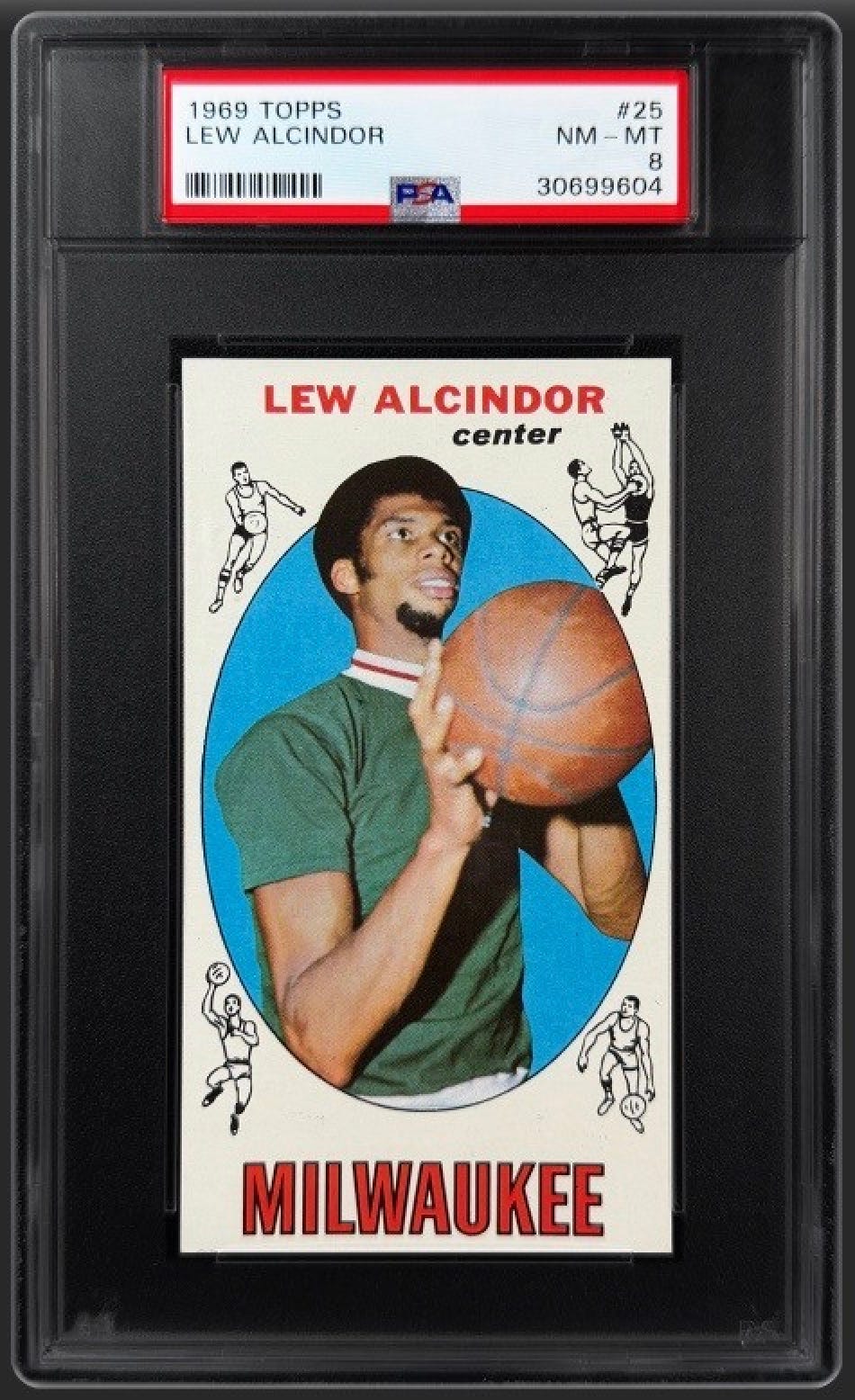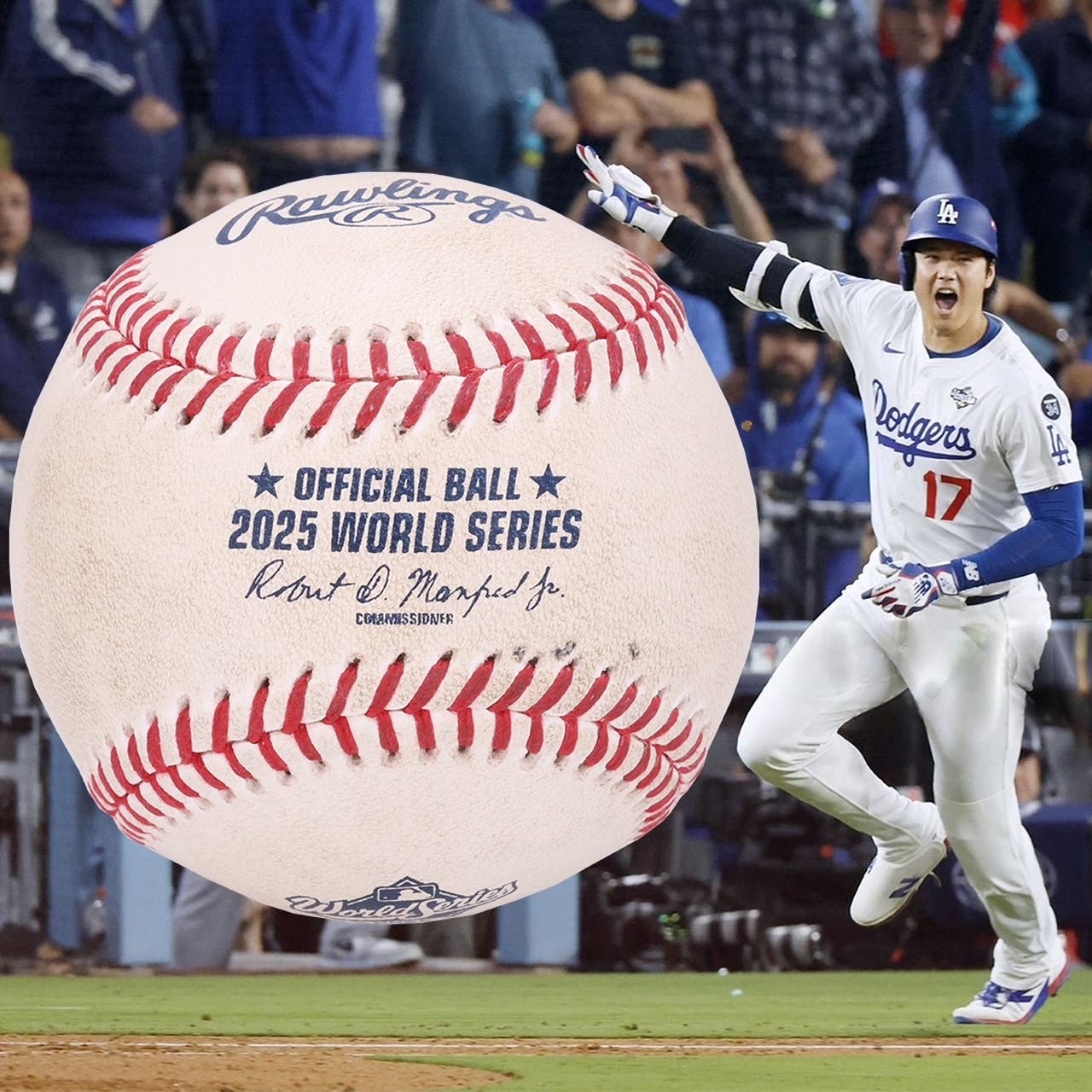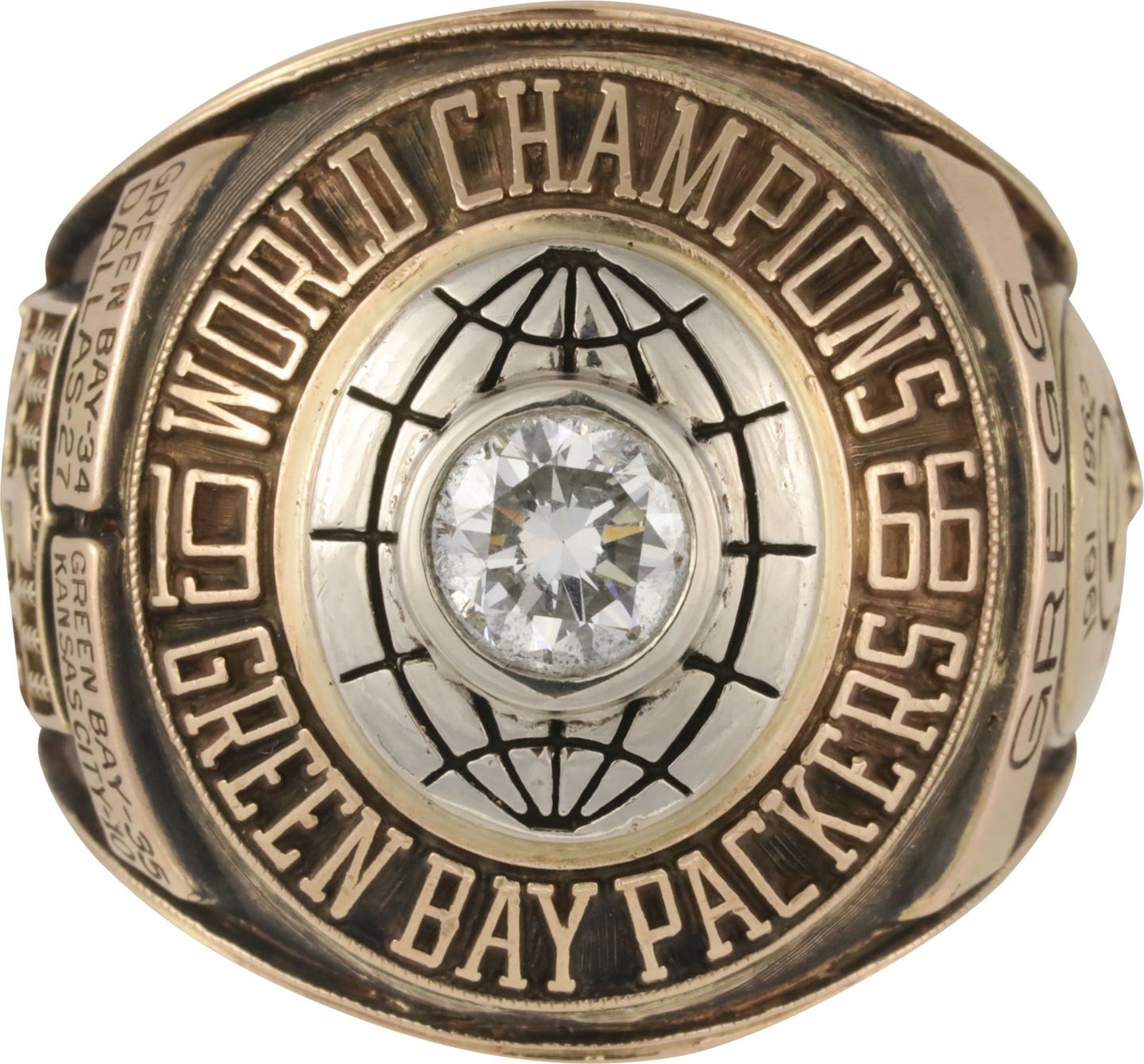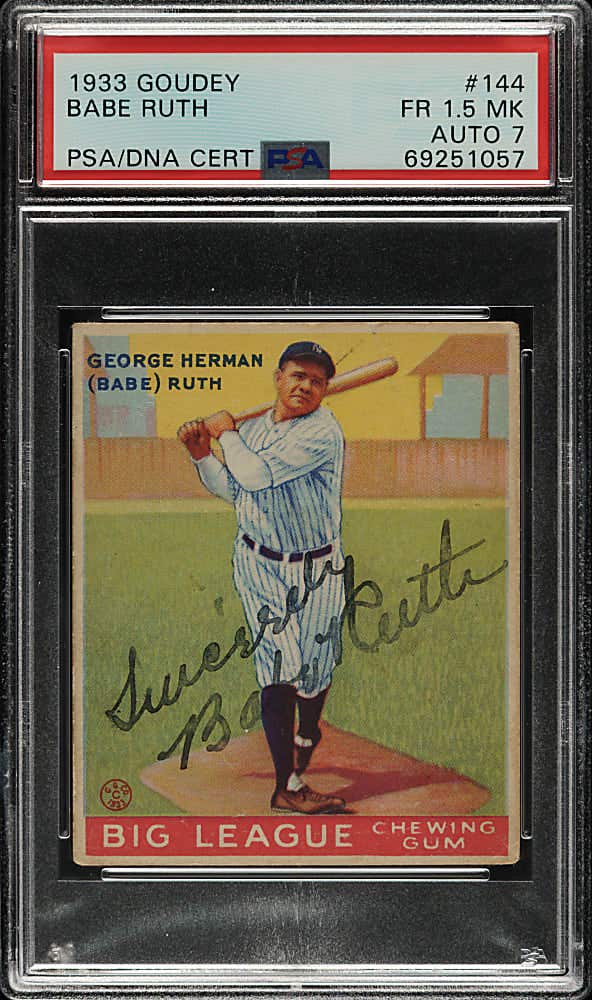Collecting 101
That’s a wrap: Collecting sports movie props and c
In the 1984 sports film classic "The Natural," Robert Redford appears as ballplayer Roy Hobbs, "Baseball's New Wonderboy," on the cover of the Aug. 14, 1935, issue of Life magazine. The fictional Hobbs, of course, was never accorded such an honor, but in the make-believe world of Hollywood it did come true -- thanks to a screenwriter's vision and the all-important movie props people.
The imaginary, or "dummy," copy of the "Roy Hobbs Life" issue is just one of thousands of props devised through the years for an army of Hollywood sports flicks. And, boy, do collectors love them, often shelling out big bucks for an item which, more often than not, appeared only once on camera and then faded to black.
History
Movie props and costumes have always been an integral part of the film industry, with close tabs being kept on all studio property. This, however, does not mean that all artifacts were saved or that some items were not taken home as "souvenirs" by cast or crew, the latter of whom one might call the earliest collectors. But it wasn't until 1970 when movie fans and the general public really got their first taste of such artifacts when MGM Studios, facing a huge storage problem, opened its bulging warehouses and offered for sale thousands of props and costumes from 45 years of moviemaking, including coveted artifacts from the 1939 film classic "The Wizard Of Oz." That legendary sale, conducted by David Weisz Auction (the seven-volume set of catalogs plus the rare auction-day addendums from this seminal offering sold for $950 at one auction), forever whetted the appetites of collectors, thus creating an elite sub-hobby of "movie-used" memorabilia.
In time, various businesses specializing in movie props and costumes opened their doors. The first retail outlet was Elaine Vollmer's The Retake Room, which began as a small boutique in Studio City, California, in 1981. Later renamed Studio Wardrobe, the store now does business exclusively online as Reel Clothes & Props from its headquarters in North Hollywood, Calif.
Other specialty businesses soon followed, including Startifacts, Starwares on Main, It's a Wrap Store and Starticles, the latter of which was started in Canada in the late 1980s. Soon, auction houses also got into the action, with Butterfield & Butterfield, Camden House, Profiles in History, R&R Enterprises, Heather Holmberg, Leland's, Sotheby's, Christie's and others offering film props and costumes in their catalogs.
Today, movie props and costumes are big business, with sports-related items especially popular among collectors. It's an ideal marriage really -- the twin glamour arenas of sports and Hollywood coming together to create some of the hottest, one-of-a-kind collectibles ever to grace the hobby.
Terminology
When collecting items in this field, it's extremely important to understand the basic terminology. To jump into this collecting discipline blind or uninformed is to court catastrophe.
The most desirable items are original movie-used props and costumes -- those items which were actually seen on camera. Legitimate sellers will bill these artifacts as such, leaving no doubt as to what they are offering for sale.
The next best thing are backup props, genuine items created for a movie or television production but which never appeared in front of the cameras. Think of these as the second-stringers; they were sitting on the bench, ready to go at a moment's notice, but never actually made it onto the field of play.
Next up are replica or reproduction items, those pieces created to look like the originals. Oftentimes, replica props are molded from the originals or fashioned using the same components. As for replica costumes, they can be made using the same material and specifications as the originals. Again, legitimate sellers will clearly bill replica pieces as just that.
Also worth a prominent mention are film crew items and pre-production artifacts. The former include jackets, T-shirts, hats, patches and gift items bearing the picture's name and logo which were only available to cast and crew. (Watch a "Making of..." documentary of any recent film and you can often glimpse a director like Steven Spielberg decked out in one of these special crew hats or jackets.). The second category includes items used in the pre-production phase of a movie -- things like miniature models and reference sets, busts, costume sketches, prints, storyboards, artwork, and photographs.
Authenticity
Businesses that specialize in props and costumes generally work with major studios and production companies, creating a chain of evidence, much like law enforcement in a criminal case, in order to establish provenance and authenticity.
"During production, the production company and movie studios may tag wardrobe with the names of the characters that wore them," states a basic primer on costumes from Premiere Props of North Hollywood, Calif. "These tags are usually safety-pinned or sewn inside the wardrobe. If wardrobe is not tagged, the studios separate and organize the actors' wardrobes into individually marked boxes."
In order to further authenticate a costume or prop, the staff will then look at production stills and view the actual movie numerous times, matching up the item to what they are seeing on the screen. Problems can arise, though, as older films made in black and white or items color tinted for a better screen effect can sometimes make the process less than an exact science.
Also, due to production requirements, multiple versions of any given item may have been made for the picture. A good example, as cited by Premiere Props, is the film "The Punisher" (2004), which employed several different vests as worn by the title character played by Tom Jane. One version had to be clean, another ripped up for an action scene and yet another custom-made with fake Hollywood blood adorning it. That's three vests for one character, with all of them qualifying as a genuine piece of the original costume.
Some businesses will actually take possession of all props and costumes once a movie has completed filming. That kind of provenance is hard to beat, with their certificate of authenticity (COA) or letter of authenticity (LOA) assuring collectors of a clear chain of possession.
COAs and LOAs are standard practice in the field, with specialty businesses, auction houses, production companies, studios, prop men and special effects entities offering them to collectors. They are, of course, only as good as the people issuing them, so it's best to stick with the established sources.
One such source is The Prop Store of London (yes, this is an international business), which promises its customers: "Each unique piece within our inventory has been purchased directly from sources connected to the film industry. The history of each item is thoroughly researched and is offered for sale in complete confidence and with a lifetime money back guarantee and certificate of authenticity. Each individual item is allocated a unique serial number which is filed and stored in our database."
Collectors can also find auctions which feature props and costumes offered directly from the studios or production companies themselves. In the past, Columbia Pictures, 20th Century Fox, Disney, Warner Bros. and Lucasfilm Ltd. (think "Star Wars") have conducted auctions on ebay and/or Yahoo! There's nothing like acquiring an item from the original source.
Interestingly, one will still encounter items sold and re-sold from the legendary 1970 MGM auction. One can usually find these gems at the bigger auction houses, still accompanied by th eir original papers. That kind of attribution is golden -- and valuable -- as artifacts that can trace their lineage back to the "birthplace" of movie props and costumes as collectibles generally carry a higher premium.
It probably goes without saying (but here it is anyway) that due caution should be exercised when purchasing props and costumes from unrecognized sellers on general online auction sites. "Original movie props" offered here can often take the form of replicas or promotional pieces. But, to be fair, many such items are billed as such, even if you sometimes have to persue the entire copy to ascertain that fact. Just make sure you understand the difference between an "original prop" and an "authentic replica" and know from whom you are buying.
Aiding buyers and sellers alike is The Movie Prop Association (www.moviepropsassociaton.org), an organization comprised of dealers and collectors, whose members are dedicated to conducting business in a fair and ethical manner. Established in 2001, the MPA performs a number of functions, including alerting the hobby to fraudulent dealers and collectors, using its resources to investigate authenticity claims, answering questions about props and wardrobes, and locating items for collectors.
Availability
An array of sports movie artifacts are regularly offered today, either through auctions or set sales. Part of the field's allure is never knowing what will emerge from the warehouses of Hollywood, with the following serving as a recent testament to the hobby's diversity:
-- "Raging Bull" (1980) is duly recognized as one of the greatest boxing films ever made. It starred Robert De Niro as Jake LaMotta, winning De Niro a richly deserved Oscar as Best Actor. In December 2005, the professional Everlast gloves used by De Niro in the movie, and signed by the actor as well, once again came up for auction, this time with Profiles in History as the seller. The winning bid was $27,500, eclipsing the $16,286 figure the gloves had brought in 2003.
-- Crooner Frank Sinatra starred as fictional Wolves ballplayer Dennis Ryan in the 1949 baseball musical "Take Me Out to the Ball Game." A jacket worn by "The Voice" in that picture brought $6,000 in a 2004 Profiles in History auction.
-- "The Natural" (1984), based on the Bernard Malamud novel, is one of screendom's best-loved sports movies, a combination of old-fashioned baseball and out-of-this-world fantasy. In 2006, a nice selection of props from that film hit the auction block at Profiles in History: the famed baseball from the "Fireworks" home run, an umpire's ball/strike counter and three Roy Hobbs baseball cards (including one signed by Robert Redford). The winning bid was $5,000. The baseball had been designed and created by Christopher Gelman, who had fortunately retrieved the ball after the scene had been filmed.
-- The All-American Girls Professional Baseball League (1943-1954) was the subject of "A League of Their Own" (1992), which brought us the memorable Tom Hanks line: "There's no crying in baseball!" In that movie Madonna played spunky ballplayer Mae Mordabito. Her Rockford Peaches uniform brought $3,894 in a 2006 R&R Enterprises auction.
-- The saga of Seabiscuit was chronicled in the 2003 Oscar-nominated film of the same name. The silk blue and gold riding shirt and cap worn by Toby Maguire as jockey Red Pollard brought $1,175 in a 2004 Lelands auction.
-- In baseball (and sports movies) they don't come bigger than Babe Ruth. In a 2004 Profiles in History auction, the New York Yankees uniform worn by John Goodman as Ruth in "The Babe" (1992) brought $1,300.
-- "Friday Night Lights" (2004), starring Billy Bob Thornton as Coach Gary Gaines, expertly captured the absolute mania surrounding high school football in the state of Texas. In 2005, a collection of props from the movie came up for auction at Lelands, which included eight stadium seat pads, seven programs, two playbooks, 12 shirts, two tote bags, three bookmarks, one award plaque, a pair of football pants and 35 pins. The winning bid was $587.
-- No doubt about it, "Cobb" (1994), starring Tommy Lee Jones as the legendary Ty Cobb, was a different kind of baseball picture, centering on some of the more unsavory aspects of the Hall of Famer's life. A complete 1916 Detroit Tigers replica uniform worn by Jones in the film brought a top bid of $426 in a 2005 Lelands auction.
-- Actor Tom Berenger excelled in his role as college football coaching legend Paul "Bear" Bryant in the 2002 ESPN movie "The Junction Boys," which examined Bryant's first "summer of torment" as head coach at Texas A&M. In 2003, Lelands auctioned a collection of props and wardrobe used by Berenger in the picture, including Bryant's trademark checkered hat, a leather folio emblazoned with the initials "PWB," newspaper articles, photographs, football plays, a clipboard, a 1954 Aggies football schedule poster, Bryant's Aggies jacket autographed by Berenger, and Bryant's Texas A&M T-shirt, pants and leather belt. The winning bid was $1,683.
-- "Field of Dreams" (1989) is one of baseball's great fantasy pictures. The Wilson ball tossed around by Kevin Costner and Dwier Brown in the emotional finale brought $10,000 at a 2006 Profiles in History auction.
-- The notorious Chicago gangster Al Capone attended more than a few ballgames during his lifetime, including Cubs games. In the 1987 film "The Untouchables" Robert De Niro as Big Al can be seen demonstrating his own baseball prowess when he delivers a fatal blow to a fellow mobster at a gang meeting. Al's weapon of choice in the movie was a Hillerich & Bradsby Babe Ruth model replica bat, which in 2001 came up for auction at Lelands. Still stained with a bit of movie blood from Scarface's beaning of the traitorous hood, it brought $9,695.
William J. Felchner is a writer from Staunton, Illinois. He can be reached at wjf21@madisontelco.com.








